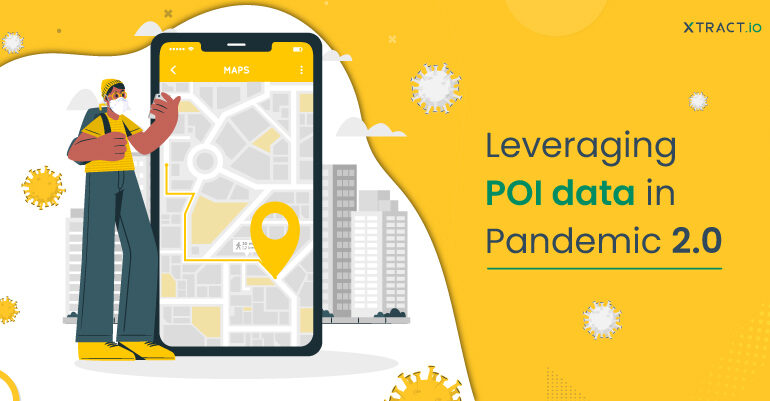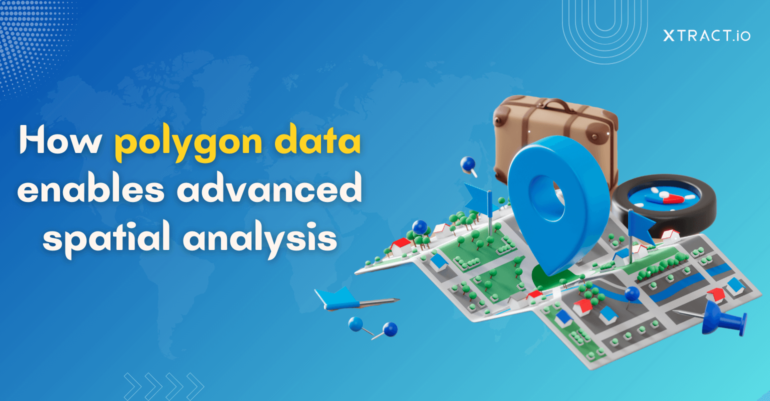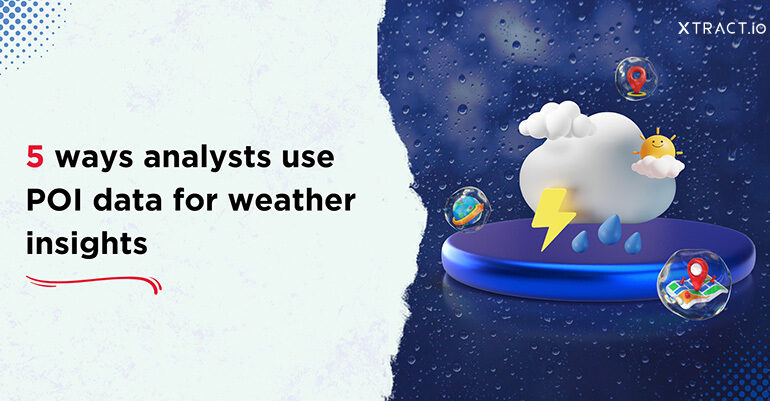Two years passed by, but the Covid has pledged to stay back and invade our homes and health. The Covid-19 pandemic and following global lockdowns have been an eye-opener for both government and the people who are surviving and thriving in this tough situation. Xtract.io highlights the importance of leveraging location data to combat the never-ending viral pandemic.
Top 5 location-related learnings from Pandemic 1.0
- Tracking mobility patterns of people is crucial to implement restrictive measures such as lockdowns
- Identifying case detection location spot prevents infection spread
- Updating POIs post-pandemic is as important as opening or closing a new business
- Developing technology location-related apps such as the Aarogya Setu app (in India) and Coronamadrid app (in Madrid) that help people in detecting cases around them and manually doing self-test.
- Tracking medical supplies such as PPE kits, vaccines, etc. in specified locations helps in measuring preparedness levels.
No matter how much we prepare ourselves to cope with the pandemic, the effects of it usually take time to get back to “normal”. While we have certainly made ourselves equipped with the knowledge and technological advancement to cope with it, there’s more to implement following pandemic 2.0. With increasing Covid and Omicron cases, it is important to take all preventive measures to combat the situation effectively. Here are a few recent ways to leverage geospatial data to devise mitigation measures.
Use of location analytics heat maps
Imagine a visual map indicating the number of active cases in a locality? This map is a gold mine for government officials as it can help them to respond to these cases and isolate them in a separate location so that the infection isn’t spreading. Most importantly, it could also help health experts to identify the cause of the spike in a particular locality compared to other places. May be seasonal reasons, public health awareness, unmaintained public places, lack of immunity necessities, etc. Heat maps also help in identifying the number of death cases, mass-gathered spots, and vaccination success rate in a particular location. For example, below is a heat map that shows how cases per capita have changed in different parts of the world in the last seven days.

Heat maps and analytical tools are valuable resources for government officials in measuring and controlling pandemic outbreaks. Post-pandemic, various locations companies are working towards building tools that rely on aggregate location information. For example, vaccination progress rates across the globe can be visualized via a heat map as seen below. The heat map indicates the percentage of the population that is fully vaccinated. Such type of critical data helps in the research and analysis of policy.
Use of GPS and mobility data
As per World Health Organization, social distancing is one of the primary recommendations to protect ourselves from the zoonotic coronavirus. Imagine a shopping center that is crowded and jam-packed in a store that’s offering a great sale. It is easier to identify such locations with mass gathering via GPS data that indicate the location you are at. Thus, to avoid the widespread of the novel virus, such critical data help in tracking and tracking human footprints.
In 2020, when Covid-19 devastated our lives and routines, Facebook responded to this real-world crisis and adapted its Disease Prevention Maps. This tool builds population density maps based on people’s location as provided in Facebook/Instagram application, user movement or travel patterns, and more. Similarly. Google launched its COVID-19 Community Mobility Reports, which indicates movement patterns based on six categories which include retail, grocery, park, pharmacy, workplaces, and residential. For example, the below Covid data analytics indicates the movement patterns in Sacramento County in California for the period Dec – Jan 2022.
Use of updated POIs
The widespread covid pandemic in 2019 devastated a lot of businesses. With its partial end, a lot of businesses shut down due to losses incurred, factories winded up their operations due to lack of labor, and other businesses either relocated or moved online due to changing environmental changes.
Updated and verified POI data are now the brain of any business strategy. They help you visualize the exact positions of stores, markets, consumers, etc. based on real-world current scenarios. Such insights are useful to develop target-based marketing strategies, understand market trends, and analyze mobility patterns around a locality. At Xtract.io, LocationsXYZ provides updated POI data across all industries such as retail, healthcare, automotive, food & dining, business & services, banking & finance, and many more.
Privacy in Pandemic 2.0
Using location data from smartphones to track the spread of the disease is okay, but to track the movement of an individual is not okay. Yes, with the next wave of the spread, local and government authorities have become extra cautious if location data is used judicially and sensitively.
Location data is collected via GPS, Cell towers, Wi-Fi networks, beacons, and many more by various commercial entities such as tech companies, application partners, or location analytics providers. Therefore, it is important for government and policymakers to identify the source of the data and seek answers from the location data providers on – how was the data collected? Whether this data helps in meeting the pandemic analysis goals? Can we be less invasive in tracking human mobility for social distancing and lockdown analysis? To know more about how POI data is collected and how it can be used for your business, connect with us now.









